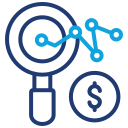KPIs, Dashboards, and Real-Time Insights
Great cloud-based management accounting ties KPIs to controllable drivers: contribution margin by cohort, CAC payback, inventory turns, cash burn runway. When metrics connect to actions, teams negotiate tradeoffs thoughtfully, celebrate leading indicators, and challenge vanity numbers that distract from outcomes.
KPIs, Dashboards, and Real-Time Insights
Self-serve is empowering when governed. Use curated metric catalogs, definitions, and certification badges. In cloud-based management accounting, role-based views keep sales, operations, and finance aligned while drill-down and comments preserve institutional memory directly alongside the evolving numbers.







